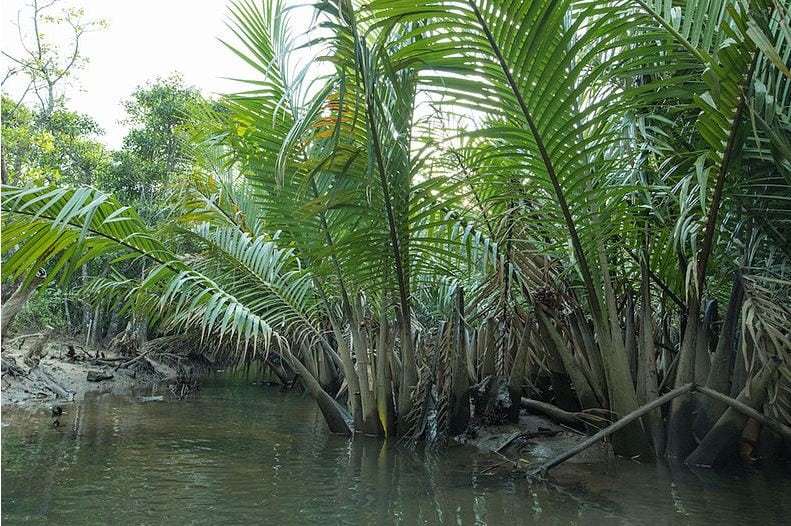
Localized Threats To The Unique Nipa Palm
nipa thatchHistorically, thatched roofs in Thailand were virtually entirely made of nipa palm (Nypa fruticans Wurmb) leaves. These tropical palm leaves were once one of the prominent materials used in traditional Thai houses as a roofing material throughout history. Nipa palms grow along mangroves, deltas, tidal areas and swampy coastal lowland areas.
Nipa Palm’s Unique Qualities
The nipa palm is different from other palms within Southeast Asia in a few ways.
- Nipa palm has a prostrate stem, growing horizontally.
- Older parts of the stem disintegrate, fall, and divide into separate ramets.
- Fallen ramets from one original nipa palm plant can clone into separate plants to cover more than one hectare.
- It’s the only palm that’s adapted to the mangrove biome.
- Nipa palm leaves can extend up to 30 ft in height.
The nipa palm plays a huge role in the maintenance of its native coastal ecosystems and erosion control.
Although it isn’t a threatened species and is considered an invasive species in some areas of the globe, the nipa palm has fallen victim to localized threats in areas where the plant was revered so much that it was the source of folklore and even folk medicine. The decline of the nipa palm in mangrove areas is estimated at about a 20 percent decline since 1980 alone, as of 2007.
Threats To Nipa Palm In Its Native Environment
Threats to nipa palm include habitat destruction as the mangroves are cleared for shrimp farms, fish ponds, rice production, coconut plantations, agriculture, and urban development. See, mangrove species are more at risk from coastal development. Nipa palms have almost disappeared in the Indian Sundarbans, because of reduced freshwater flow. The plant is also sensitive to strong wave action that can be caused by passing ships. They are threatened by rising sea levels because of the extra salt water exposure. Nipa palms are also threatened by solid waste, sewage effluents, oil spills, urban runoff, and siltation.
Two Problems With Nipa Palm Thatch Farming For Commercial Thatching
We see two problems with the commercialized use of the nipa palm for thatched roofing to serve the growing demand from homeowners, resorts, amusement parks, and zoos around the globe.
As these palms are planted for commercial use in non-native areas, they threaten the survival of the new areas’ native ecosystems. Nipa palms displace the native plants living in areas where they should not be growing.
Meanwhile, in many of their actual native areas, nipa palms themselves are threatened, because of the aforementioned points. Plus, just as nipa palms maintain the survival of the biome in their native areas, they negatively affect microbes and fauna when farmed in their non-native areas.
Endureed Synthetic Thatch Roofing: A Greener Way
These should not be risks that we take to make our Tiki huts, cabanas, and rooftops gorgeous. We shouldn’t take these risks with either the nipa palms, nor the ecosystems of other areas just to create beautiful thatch. We don’t have to be a part of the problem. There is a better way to replicate the beautiful nipa palm thatching of Southeast Asia … a greener way.
Endureed produces an eco-friendly alternative to the traditional nipa palm thatching in Southeast Asia. Plus, it’s 100 percent recyclable, but it offers numerous other environmental benefits over natural thatching too. Additionally, our synthetic thatch helps buildings earn their LEED certifications. This in turn actually increases per-room revenue among resorts and hotels.







